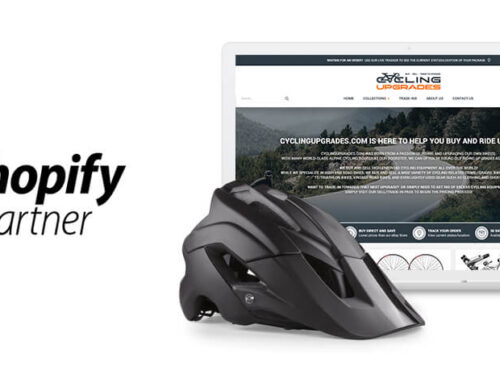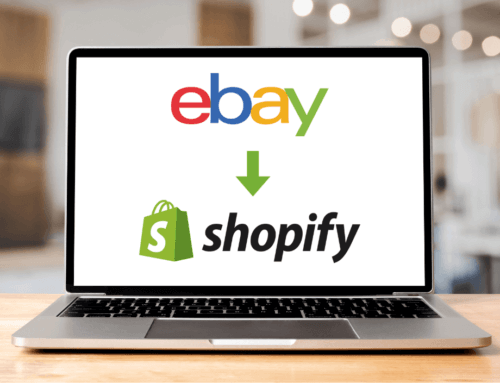
The e-commerce landscape has changed dramatically over the last decade. What used to be a complicated, expensive endeavour – selling online – is now easy, fast, and cheap. There are more e-commerce platforms than ever before, and entrepreneurs have never been more spoiled for choice.
This has unfortunately also made your job as an entrepreneur tougher. More options are nice to have, but when you have dozens to choose from, how do you figure out what’s the right fit for your business? What features should you look for? What should you ignore?
It doesn’t matter whether you’re a seasoned entrepreneur or a small business trying out their first e-commerce rodeo, this guide will help. We’ll look at all the key features your next e-commerce platform should have and how to choose the right one below.
Why Your E-Commerce Platform Matters More Than Ever
At this point, you might be wondering: Does it really matter what e-commerce platform I use?
If you’re a serious entrepreneur, the answer is a resounding ‘yes’.
Your e-commerce platform is more than just a place to catalog your products and accept payments. It is a competitive advantage, a better customer experience, and a better brand – all rolled into one.
Think of the last time you tried to access a store only to encounter a poor checkout experience, a slow loading site, or a design that was plain confusing. Did this experience make you want to revisit the store?
More often than not, such poor experiences can be attributed to the store’s e-commerce platform. Minor things such as a slow-loading server or poor integration with payment providers can result in catastrophically bad customer experience.
At a time when the e-commerce market is bigger than ever – worldwide sales are expected to near $5 trillion by 2021 – you can’t afford to let a poor customer experience impact your business. Especially when this experience can be solved by simply choosing a better e-commerce platform.
Then there’s the matter of competitiveness. A better e-commerce platform is faster, designed for mobile, and optimized for search engines. This helps your store load quickly, work great on mobile, and get found easily in organic results.
The eventual impact?
Your store has better visibility and better sales.
These are just a few reasons. As we’ll see below, choosing the right e-commerce platform can give you a massive leg-up over the competition.
But before that, a word of caution.
Keep Your Requirements in Mind
It is undoubtedly true that some e-commerce platforms are better than others.
But there is no truly best platform.
It all depends on the kind of business you’re running. What works for a small business won’t work for a Fortune 500 company, and vice versa. You have to consider your requirements before you can figure out what’s the best platform for your business.
A few things that impact your decision are:
- What country or market you’re operating in
- The average number of orders you receive per month and the average size of the order
- What payment providers are available in your target market
- The software tools you currently use and what e-commerce platforms they integrate with
- The scale of your operations, especially in terms of concurrent users
- Your target customers – their preferred language, computing device (mobile or desktop), tech-savviness, etc.
Find the e-commerce platform that suits your requirements and you’ll find that it performs better than any of the so-called “best” platforms.
On that note, let’s look at the 7 things you must consider when choosing your next e-commerce platform.
Mobile-Friendliness
The biggest change in the e-commerce landscape over the last decade has been the emergence of mobile-friendliness as a key selection criterion.
While I can trot out the statistics, you already know why: mobile is the default usage device for large numbers of your users. You can see it everywhere – buses, trains, shopping malls, and even dining tables: people glued to their phones, browsing their favourite websites.
Mobile makes up 67.2% of all e-commerce in 2019. This figure is poised to grow to 72.9% by 2021 globally.
If you’re competing in markets outside the western world, the mobile vs desktop divide is even more stark. In a lot of these markets, the mobile revolution happened before the broadband revolution could take root.
For instance, in China, mobile makes up nearly 80% of all e-commerce sales. A Chinese business ignoring mobile-friendliness essentially ignores 4/5th of its customers.
Another reason to focus on mobile-friendliness is Google’s guidelines. In 2015, Google rolled out a search algorithm update – dubbed “Mobilegeddon” – that prioritized mobile-friendly websites.
Later in 2019, Google rolled out “mobile-first indexing”, i.e. every new site is now indexed through its mobile version, not the desktop one.
This effectively means that any e-commerce website that does not prioritize mobile-friendliness risks losing out in search engine results pages (SERPs). You can have the best content and SEO in the world, but if your site is unusable for mobile users, Google won’t rank you.
All these factors make mobile-friendliness a key criterion for choosing your next e-commerce platform. Test out the platform and see how it performs on mobile devices. If the experience is slow, bloated and unfriendly, you risk losing customers.
SEO Friendliness
This might be the era of social media, but that doesn’t mean you can ignore search. In fact, search sends a higher share of traffic to websites than social media.
Not only that, search traffic tends to convert better than social media traffic.
In other words, when you excel at search over social, you not only get more traffic, but your traffic also buys more easily.
The catch is that to excel at search, you need an e-commerce platform that excels at SEO. While “SEO friendliness” covers a lot of things, the most important features you need to look for are:
- Correct usage of on-page SEO tags and metadata
- Search-friendly features such as support for structured data and schema
- Small page size and fast loading speed
- Support for speed-enabling features such as Lazy Load and minification
- Mobile-friendliness
Given two similar e-commerce platforms, the one that loads faster, and has better on-page SEO will outperform the other.
Ignore this feature only if you don’t want to win at search.
Integrations and Apps
Any fledgling e-commerce business depends on a host of tools to manage its operations. At the very least, you’ll have invoicing, email marketing, and logistics tools.
Close integration between these tools and your e-commerce platform is vital for your business. If your e-commerce tool doesn’t “talk” to your invoicing software, you’ll have to either do everything manually or write your own code (that too only if your e-commerce software has its own API).
While integrations with your existing software stack are important, also consider the platform’s selection of apps (sometimes also called “plugins”). Unlike integrations, these apps are often purpose-specific, platform-dependent tools.
For instance, Shopify’s app store has both integrations and apps. Integrations usually connect with other platforms such as Etsy or Mailchimp and help you send/receive data across them.
Apps are native to Shopify-only (or other similar e-commerce software) and offer a limited set of features, such as digital downloads or subscription billing.
Before you decide on your next e-commerce platform, make an inventory of all the tools you currently use to run your business. Then dig through your target platform’s integration/app list and ask:
- Are there official integrations between your software stack and the platform?
- If not, are there alternatives that you can use?
- Does the software have supported third-party apps for handling common e-commerce issues such as shipping, billing, invoicing, etc.?
Omnichannel Capabilities
Shopping behaviour is changing. Customers today search on one platform, buy on another. It’s not unusual for a customer journey to start on Google, move to Facebook (for advice from friends), switch to retail stores (to try out the product in-person), and eventually end at your online store.
You, of course, know this behaviour as “omnichannel commerce”.
Omnichannel is one of the most significant developments in retail since the advent of e-commerce itself. The surfeit of devices and platforms means that customers want their favorite stores to be present everywhere. You might have a smashing website, but if your customers prefer to shop on Amazon, you’ll need a presence there to win them.
The data even shows that nearly 90% of customers research and shop on entirely different platforms. Nearly a fourth – 21% – shop on as many as four different channels.
Winning on omnichannel requires a whole new set of capabilities. You need close integration across channels to manage inventory, an integrated way to accept payments, and unified logistics.
Along the way, you must also ensure that the customer experience remains the same across channels.
Shopify, for instance, has a “multichannel” product that supports selling across different marketplaces, wholesale, in-store, etc. This means that the customer gets the same experience regardless of where he shops from, and retailers get more integrated data.
Make omnichannel capabilities a top priority when you select your next e-commerce platform.
Branding and Conversion
As an e-commerce business owner, you have a tough job. Not only do you have to make your website look good, you also have to make sure that it converts well.
These two seemingly opposite aspects of marketing – branding and conversion – can be hard to juggle, especially if you don’t have a good e-commerce platform.
To understand this, let’s go back to the basics. In Marketing 101-speak, branding is the (mostly visual) representation of your brand and its values, usually captured as part of a creative brief.
Whether your brand is bold and youthful or sophisticated and classy will be shown through your choice of colors, fonts, and imagery.
Conversion is the process of turning a visitor into a customer (or barring that, a lead). This metric is usually expressed as a percentage (a 1% conversion rate means 1 out of every 100 visitors becomes a customer). The practice of improving conversion rates is called Conversion Rate Optimization (CRO).
Conversion often means making decisions that aren’t in alignment with your branding. For instance, research shows that users most frequently abandon carts when they’re confronted with unexpected charges at checkout (such as shipping fees).
Showing a bright red banner that displays your current shipping policy might go against your branding aesthetics, but it is crucial for conversions.
The key is to choose an e-commerce platform that:
- Allows substantial customization so you can change your brand to what you want
- Offers features – either built-in or through third-party apps – to improve conversions
- Allows you to change design quickly and efficiently for testing different page variations
For instance, BigCommerce has a range of apps to build landing pages quickly (for testing brand variations) and collect leads (for conversions).
This makes it easier to balance the twin instincts of maximizing conversions without sacrificing your brand values.
- Performance
Performance – which includes everything from speed to scalability – is often overlooked in the early stages of running an e-commerce business. After all, when you’re struggling to get even 10 customers, it’s hard to imagine a time when you might have 100 customers browsing your site simultaneously.
But as your business grows, this performance is exactly what can hold you back. If your site takes 10+ seconds to load, has no clear security protocols, and crumbles under multiple concurrent connections, your customers will abandon you.
Take site speed as an example. Research shows that as page load time increases, conversion rates go down. Once you cross the 10-second threshold, your conversion rates can go down by a factor of four.
When evaluating your next e-commerce platform, consider the following:
- What security protocols does the platform follow? How does it keep customers’ data safe?
- Where is the e-commerce platform hosted? Is the underlying architecture scalable?
- What is the average load time of a site on the platform? Does it follow best practices to improve site speed – caching, CDN, minification, etc.?
Remember that you don’t just want an e-commerce platform that can serve you now; you want something that can last 5-10 years of growth.
Keep this in mind and you’ll have no trouble getting the best e-commerce platform for your needs.
Key Takeaways
To find the best e-commerce platform, look for:
- Mobile and SEO friendliness
- A large selection of integrations (especially with your existing stack) and apps
- Security, scalability, and speed
- Omnichannel capabilities
- The ability to support your brand design without compromising on conversions







